Dear reader: This article contains links to products and services that I may be compensated for, at no extra cost to you.
Cusco is the ancient capital of the Inca empire and modern gateway to Machu Picchu. It’s no big surprise, then, that the city boasts many museums.
However, the quality of these museums varies from decent to mediocre to outright bad. To make things more confusing, only some museums are included on the Cusco Tourist Pass (some of the worst ones!) and Religious Circuit Ticket, while some of the best museums in Cusco are not included on either pass.
With so many Cusco museums, not to mention all the ruins, restaurants, and other things to do in Cusco, how can visitors decide which museums are worth their time?
That’s exactly why I wrote this post! Below, I’ll introduce the best museums in Cusco which I feel are actually worth visiting. Next, I’ll cover Cusco’s church museums, museums included on the two passes, and a few other museums you might want to consider visiting. I personally visited every museum that I cover in this article.
Table of Contents
Inca Museums in Cusco
The following were my three favorite Inca museums in Cusco. However, my personal favorite Inca museum is Museo Inkariy, which is outside of Cusco in the Sacred Valley. Read about it in the final section of this article, “Museums around Cusco”.
Unfortunately, none of these three museums are included on the Cusco Tourist Pass. You’ll still probably need the pass, though, because it gives access the all the best ruins in the Cusco region.
Unlike most of the church-run museums, photography (no flash) is allowed in these three museums.
Museo de Arte Precolombino
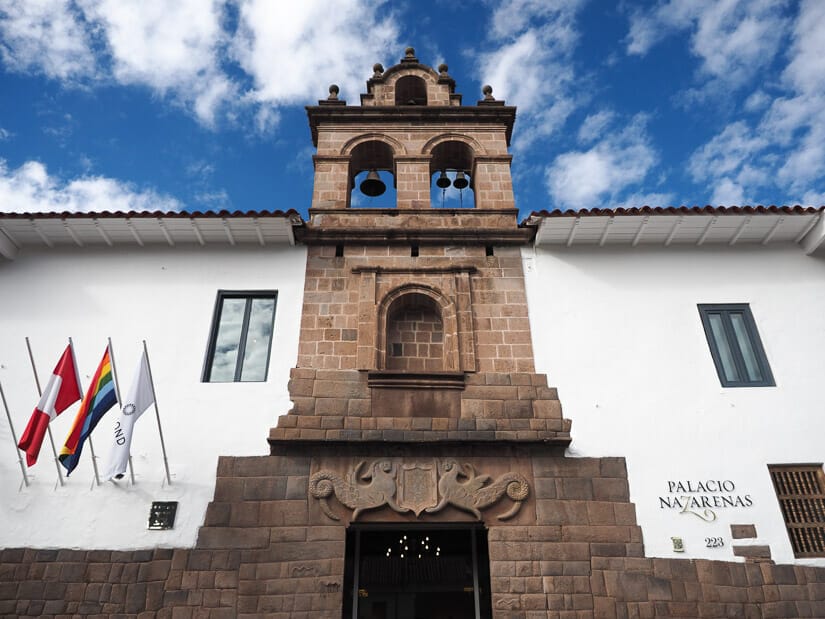
The Museum of Pre-Colombian Art (MAP) is, in my personal opinion, the best museum in Cusco.
I say this because it is the only one that, to me, felt like a properly organized and presented modern museum. The museum is operated by the same foundation that maintains Larco Museum, arguably the best museum in Lima.
The artifacts are organized into 12 themed rooms (silver, gold, wood, pre-Inca, Inca, Northern Peru, Central Peru, Southern Peru). This is unlike several other museums in town, where the artifacts are more randomly presented.
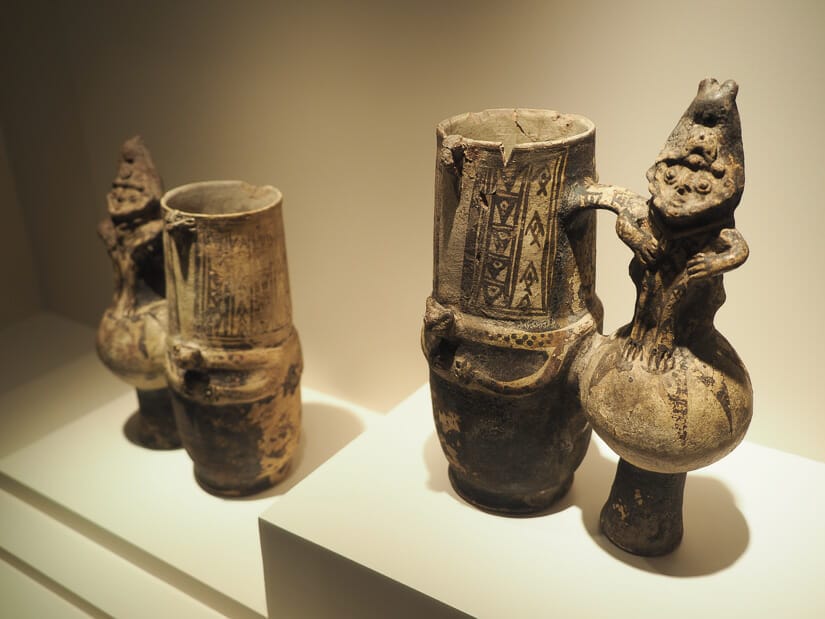
There is also proper lighting and temperature in the rooms (again unlike others in town), so the artifacts can be better appreciated.
Like many other museums in Cusco, this one is housed in an old Spanish mansion. This is the Casa Cabrera, which was built on top of what may have been a school for children of the Incan nobility. Later the house was used as a monastery for orphan girls, and again as a school in the 1900s. Part of it also houses the Palacio Nazarenas, an upscale hotel.
Watch for the really cool doorknobs as you enter and columns inside.

MAP Café in the museum’s courtyard is considered one of the finer restaurants in Cusco. They serve modern takes on traditional Andean cuisine in a white tablecloth setting.
The museum faces Plaza de la Nazarenas. Watch for the snakes carved into the Inca stone walls on the side of the plaza, called Wall of the Seven Snakes (Muro de la Siete Culebras).
Entrance to the museum is 20 soles. Photography is allowed (no flash).
Museo Inka
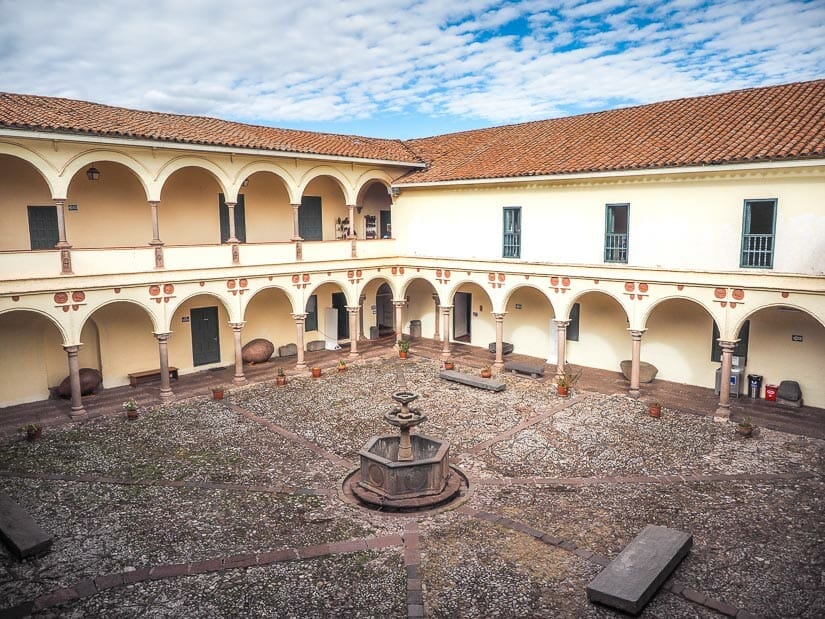
Some guidebooks list Museo Inka as the best Inca museum in Cusco. Personally, I found the museum a little old/dated, but there are definitely a few reasons to visit.
The highlights of this museum include several Inca mummies, a large collection of cheros (ceremonial cups for drinking chicha – corn beer), and a corner column on the second floor that looks like a bearded man on the outside but a nude woman on the outside.
There are also mini replicas of Machu Picchu and Choquequirao, a painting of the Inca constellations (including a llama!), and some beautiful pottery. In the peak tourist season, there are sometimes weaving demonstrations in the courtyard.

The museum is housed in the former mansion of the Spanish admiral Aldrete Maldonado, thus it is sometimes called “Palace of the Almirante”. It is considered one of the city’s most beautiful colonial homes. Since then, it has housed archbishops, the viceroy of Peru, and other members of government.
To find it from Plaza de Armas, follow the narrow lane west of Cusco Cathedral uphill to Plaza Tricentenario, which has a nice view Plaza de Armas. The museum is at the corner of the small square.
Entrance to the museum is 20 soles. Photography is allowed (no flash).
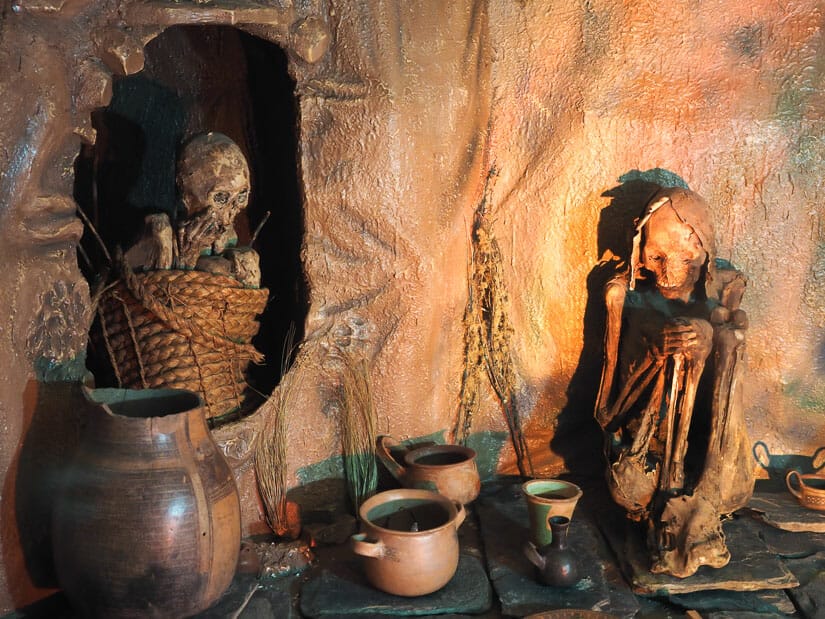
Museo Machu Picchu Casa Concha
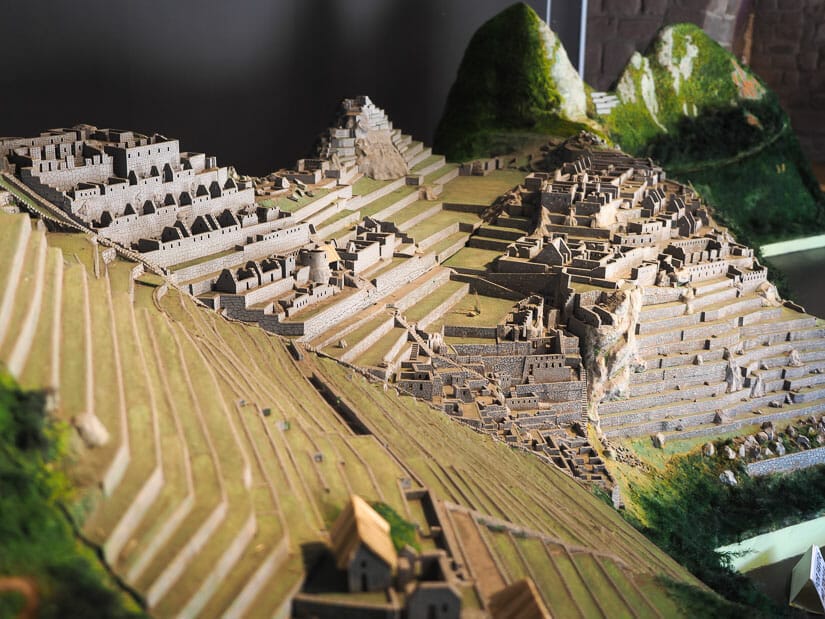
The third Cusco Inca Museum you’ll want to consider visiting is Museo Machu Picchu Casa Concha.
This museum was established to house the 366 Machu Picchu artifacts which were taken by Hiram Bingham (the scientific discovered of Machu Picchu) in 1911. Yale University finally returned the artifacts to Peru 100 years later, in 2011.
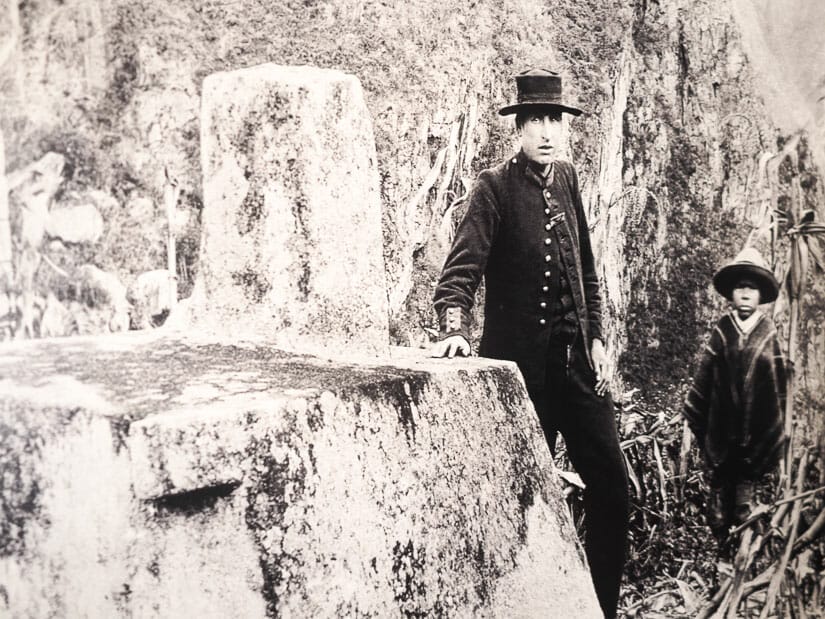
Despite all the controversy surrounding the collection, the artifacts themselves won’t blow you away.
The highlights of this small museum, for me, were the black and white photographs or Machu Picchu when it was rediscovered, the excellent mini replica of Machu Picchu, and the two mummies on display. There are also some quipus (tied knots used for counting), metallurgy, textiles, and aryballos (storage jars).
As is the norm for museums in Cusco, it is housed in a Spanish palace built upon Inca foundations. In this case, the original structure was called Puka Marka. It was a palace of Tupac Yupanqui’s family (the son of Pachacutec, builder of Machu Picchu).
Since then, it has been destroyed twice by earthquakes, housed soldiers, and been a police station.

After being restored, some original colonial paintings can now be seen in the staircase and on the second floor. In 2007, a chamber below the house was discovered and excavated. You can peer down into it through a hole in the courtyard.
Entrance to the museum is 20 soles. While I didn’t see any signs about it, photography seems to be allowed (no flash).
Church Museums
Some of the best museums in Cusco are housed in the city’s most famous churches, convents, and cathedrals.
These museums showcase hundreds of paintings from the Cusco School, a European-influenced style with indigenous/Inca elements. The museums also have other religious artifacts, plus the chance to peek into some of the city’s most impressive buildings.
Unfortunately, most of these don’t allow any photography inside. None of them are included on the Cusco Tourist Pass, but the first one is included on the Cusco Religious Circuit Ticket.
Cusco Cathedral
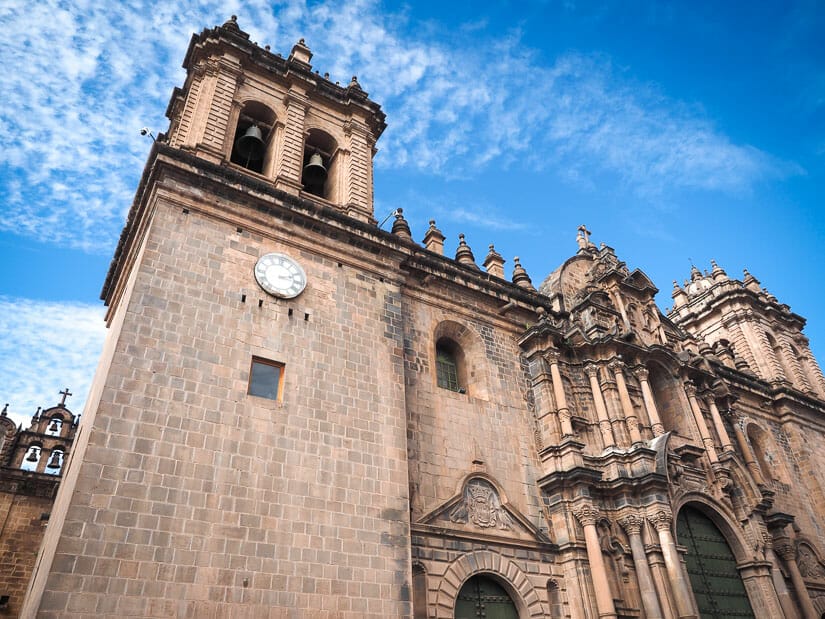
The Cusco Cathedral, or Cathedral Basilica of the Assumption of the Virgin, dominates the plaza de Armas and is one of the city’s top sights. The Spanish built it on top of Inca Wiracocha’s palace using stones taken from Sacsayhuaman, the Inca fortress above the city.
After daily morning masses (6 AM to 10 AM) are finished, the Cathedral serves as a museum of religious items and over 400 Cusco School paintings. These include two of the most famous paintings in the city.
The first is a painting of the Last Supper, in which Jesus and the disciples are about to carve up a platter of guinea pig, a common Andean dish. You can find this painting behind the main altar, on the right side.
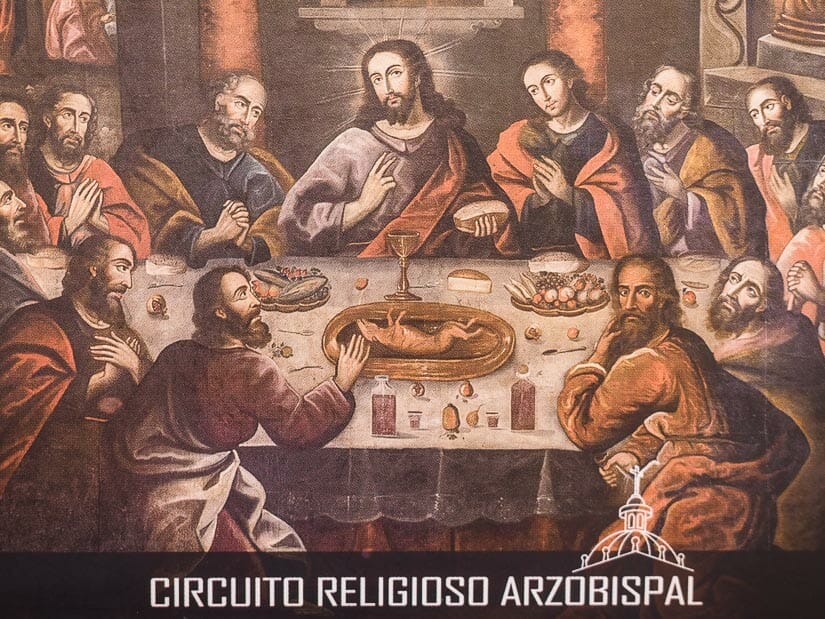
A second famous painting inside is one showing locals parading around a statue of Jesus after a great earthquake in Cusco. You can find it three naves in from the passageway between Cusco Cathedral and the auxiliary church to the north. The original Jesus statue from the painting can be seen in an alcove on the opposite side, darkened by years of smoke.
The Cathedral has a relatively plain Renaissance exterior, with a more intricate Baroque interior. Don’t forget to look up at the 24 arched ceilings.
The Cathedral has two smaller auxiliary chapels attached. You’ll enter through the Triunfo church on the right (when facing the Cathedral) and exit via the Sagrada Familia to the left, with passages connecting the three structures.

Attendants may offer you an English brochure (other languages also available) or you can ask for one.
Entrance to the Cathedral is 40 soles. For 50 soles, you can get the Religious Circuit Ticket, which includes entrance to two other sights. Photography is strictly forbidden inside and you should dress modestly.
Coricancha & Church of Santo Domingo
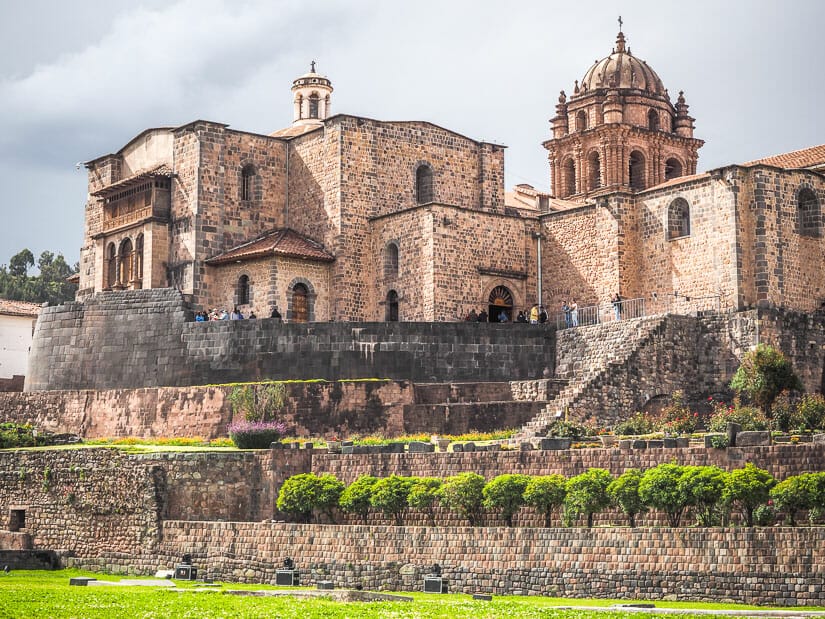
Coricancha (Qorikancha) was the most important temple in the Inca Empire. The round Sun Temple was originally plated in gold, with huge statues of corn and the famous Inca Sun Disk.
As they tend to do, the Spanish destroyed it and built church and convent on top of it. Viewing it from across the Sacred Garden, you can still see part of the original Inca round section.
Entry to the museum is through the Church and Convent of Santo Domingo. You’ll enter directly into a large Spanish courtyard, around which there are several original Inca temple structures and a back wall of Cusco School paintings.
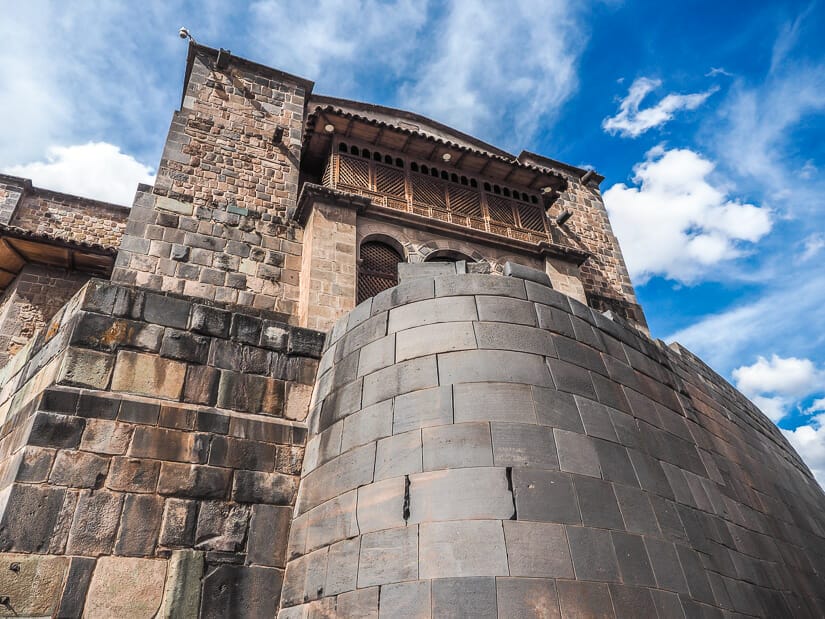
A staircase leads to an upper floor with views looking down on the courtyard inside and the Sacred Garden outside. The second floor has a couple of galleries of rotating modern art exhibits.
The second floor also provides access to the High Choir of Santo Domingo church, the second-floor room looking down from the back of the church. There are a few church artifacts and paintings there, including a massive antique book and chairs for the priests.
A narrow staircase leads from there up the Bell Tower, which offers a commanding view of Cusco and the convent below.

Entry to Coricancha is 20 soles, plus 5 soles for access to the High Choir, payable at the second-floor entrance to it.
Photography of the courtyard and Inca structures is allowed, but you can’t take pictures of the paintings or in the High Choir (except from the Bell Tower).
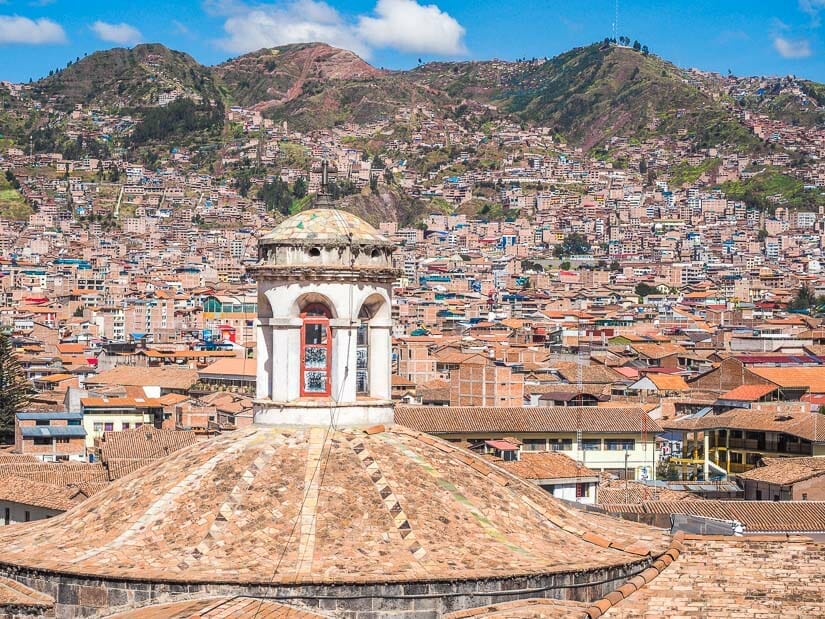
Museum of Monastic Life in Santa Catalina Monastery

The Museum of Monastic Life (Museo Del Monastério De Santa Catalina De Siena) was one of my favorite museums in Cusco. It focuses on the daily life of its resident nuns, 13 of which still live there today.
Santa Catalina is a working Dominican convent. It was built on top of Acllahuasi, a so-called “House of Virgins of the Sun” in Inca times. The museum rooms contain mannequin nuns conducting various daily affairs, such as studying, dining, and praying before sleep.
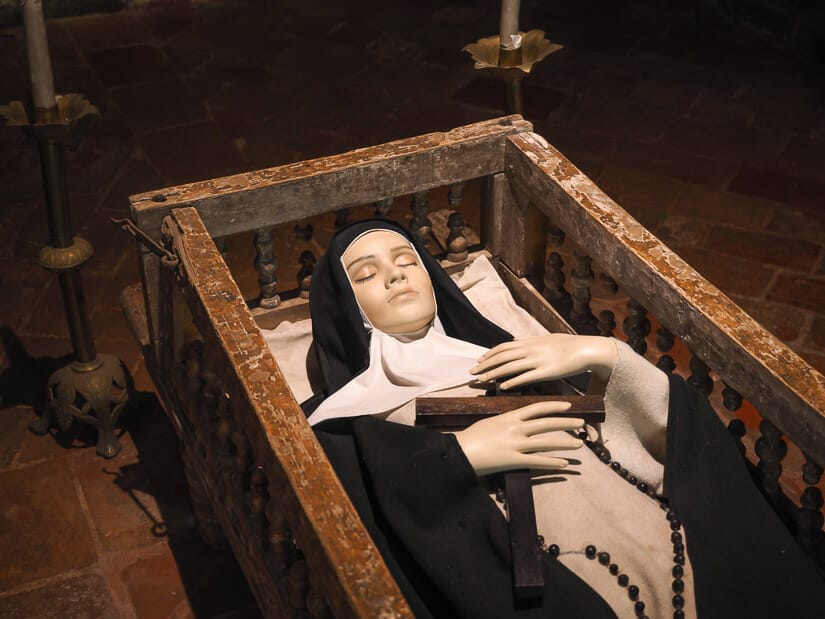
The whole place is a little dark and spooky, which is one reason I loved it. I also enjoyed the fact that during my whole visit, there was no one else in there, in stark contract to constant crowds at Cusco Cathedral or Coricancha.
Unlike all the others in this section, photography is allowed in this museum. It is the only place I visited in Cusco where you’re even allowed to take pictures of the Cusco School paintings (no flash of course). There are several magnificent examples inside.
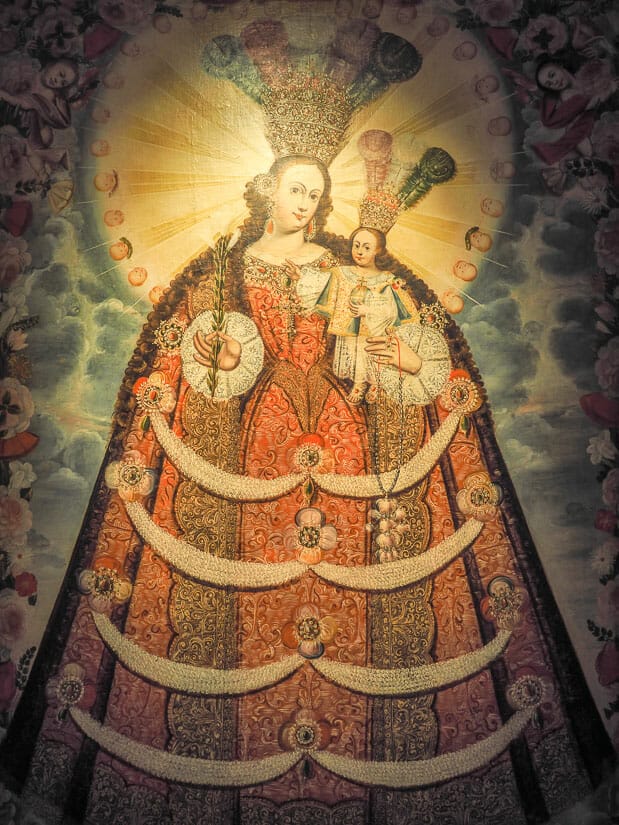
This museum only costs 8 soles to enter. It is just around the block from the southeastern corner of the Plaza de Armas.

San Francisco Convent & Museum
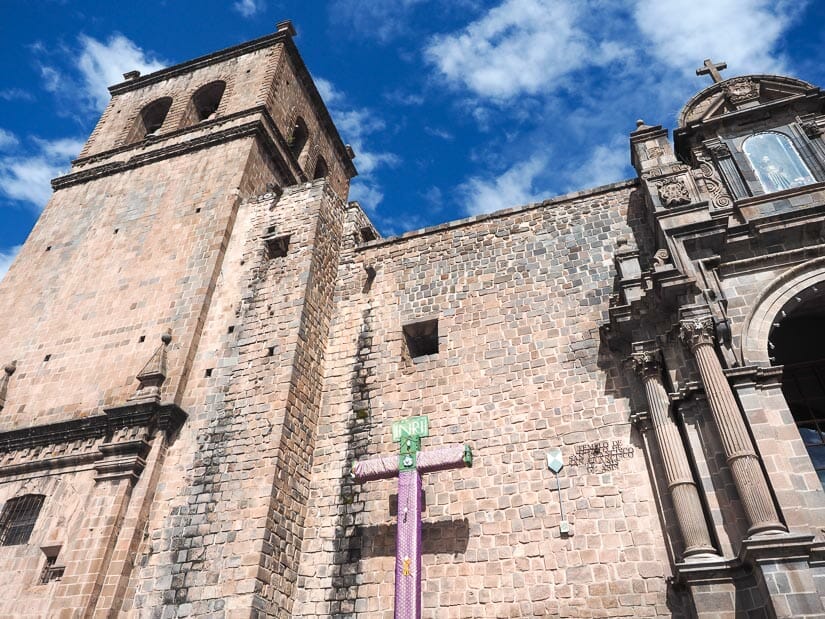
The San Francisco Convent, Museum, and Catacombs (Museo y Catacumbas del Convento de San Francisco de Asís de Cusco) is another of the best church museums in Cusco.
The highlight here is the largest painting in South America (9 by 12 meters, or 30 by 40 feet). It shows the family tree of St. Francis of Assisi. You’ll see it in the staircase going up to the second floor. Another staircase, which you’ll likely take back down, has another painting nearly as large.
Another highlight is the eery arrangements of human bones in two small catacombs at the back. However, these pale in comparison to the far more extensive ones in the convent and catacombs of the same name in Lima.
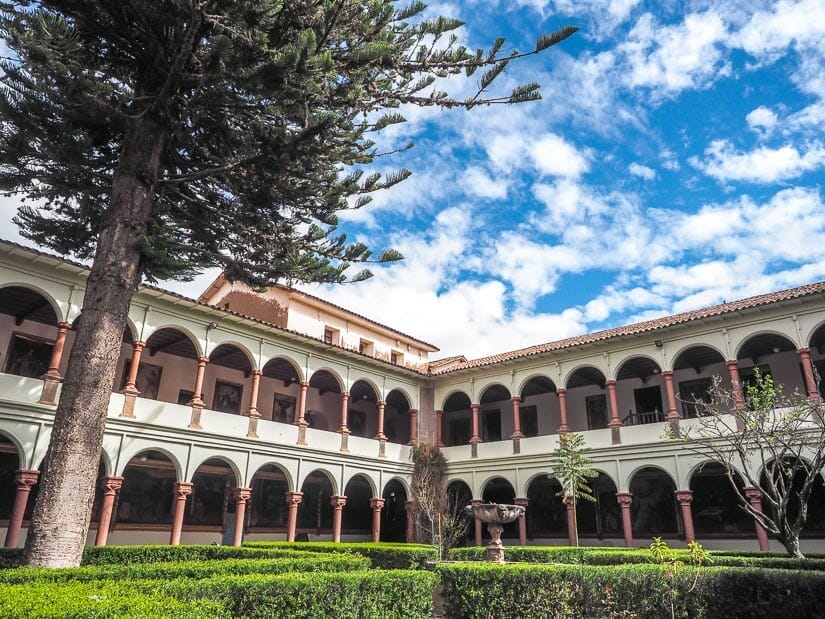
Besides the above two highlights, there are more paintings, a lovely courtyard, a cedar dresser for storing communion bread, an impressive library filled with 10,000+ books, and creaky floors throughout. There are far fewer tourists than Cusco Cathedral or Coricancha – I was the only visitor while I was there.
Entrance is through the convent (not church) side. When I visited, a guide was assigned to me (included in entrance fee). I couldn’t help but feel that part of the reasons was to make sure I didn’t take any photos.
Entrance is 15 soles and photography is not allowed anywhere except the interior courtyard. My brief tour ended with a vendor trying to sell me some artwork in the courtyard.
Basilica Menor de la Merced Museum
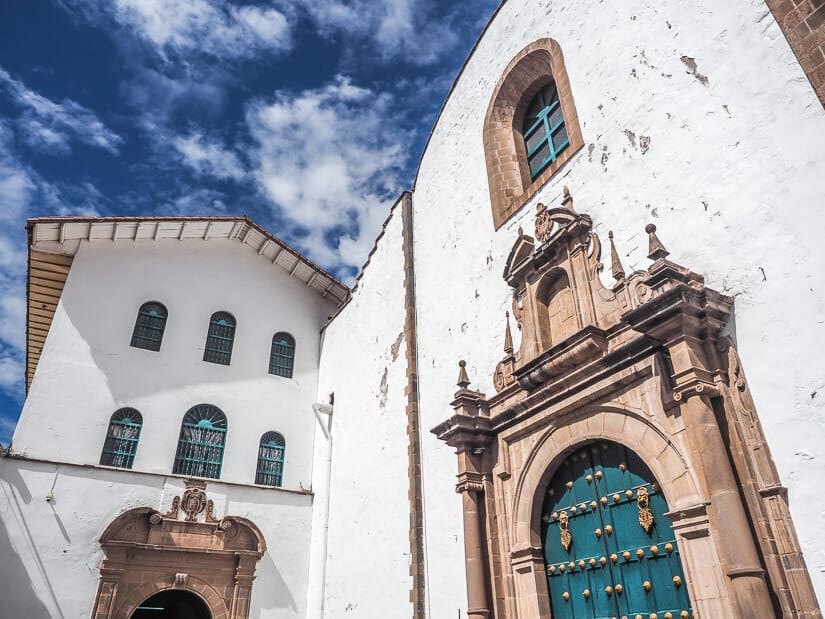
A little less impressive than the others above, the museum in the convent of Basilica Menor de la Merced has more catacombs, paintings, and a palanquin for carrying dead bodies (note the creatures on the handles).
The star item here is the stunningly beautiful 1.2 meter monstrance (the container for holding communion wafers). It is made of solid gold and covered in gems. It is in room at the back on the ground floor – if the room is closed, just ask.
There is also a very large painting in the staircase when coming down from the second floor. It also looks like a family tree.
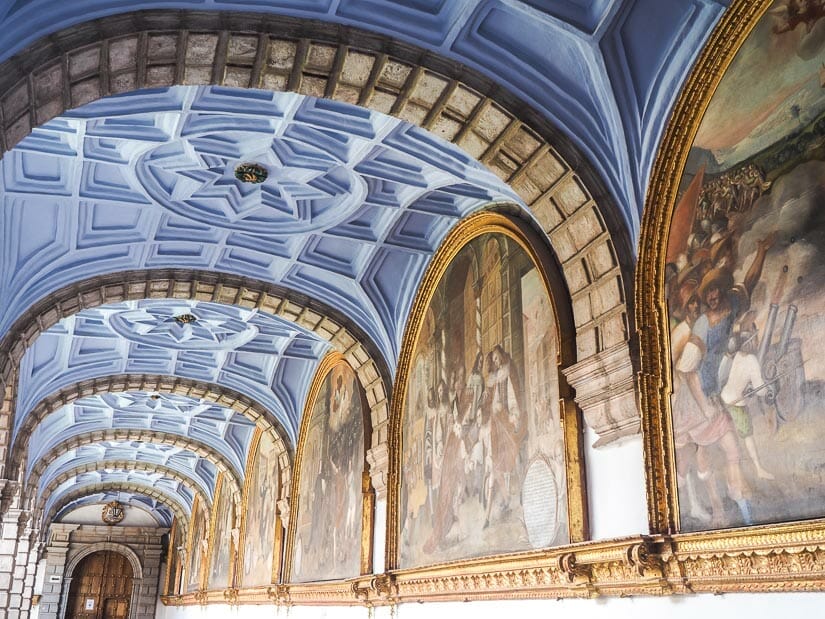
Entrance to the museum is 20 soles, which seemed a little steep, as there is less to see than at the larger (but slightly cheaper) San Francisco Convent. No photography is allowed, especially of the monstrance, and there are surveillance cameras in that room.
You can also visit the basilica itself. The church’s entrance faces the street, just a block down from the southwestern corner of Plaza de Armas. To find the museum, walk into the parking lot just before the basilica and walk to the door at the end of the lot. There are no opening hours posted for the museum, so I had to try a few times.
Church of the Society of Jesus
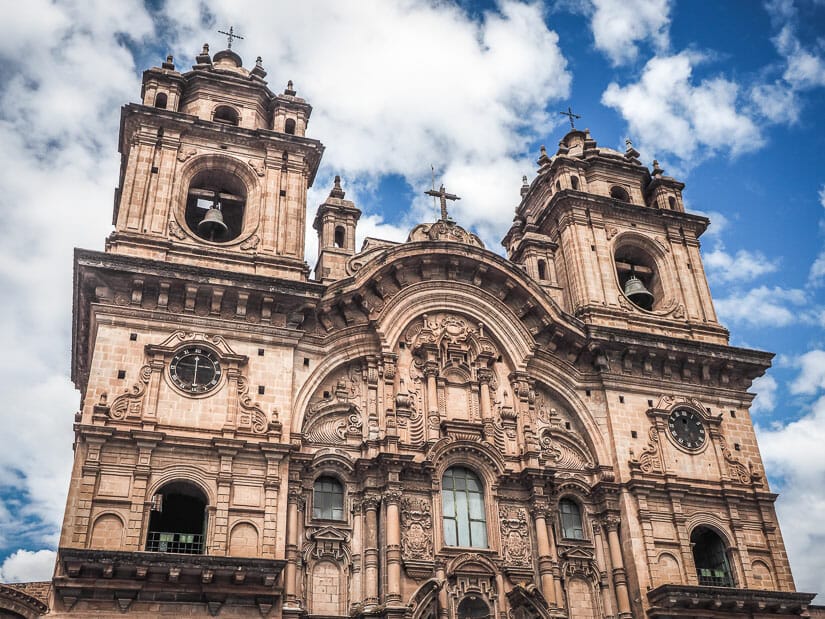
Moving back to Plaza de Armas, Church of the Society of Jesus (Iglesia de la Companía de Jesús) is the large church on the southern side of the plaza.
This Jesuit church was built to steal the show from Cusco Cathedral, with an awe-inspiring baroque façade. Its construction even caused a rivalry between the Jesuits and the Archbishop. It is considered one of the most impressive baroque churches in Peru.
The main highlight in the interior is the 21 meter (69 foot) cedar altar, the largest in all of Peru. Either side is lined with beautiful paintings, as well. In the room at the front left of the altar, a set of stairs go down into the crypt.

Before leaving, don’t miss the tiny doorway, on the same side as the crypt but closer to the church’s entrance. The door leads to a narrow staircase up to two windows overlooking the Plaza de Armas. Come in the morning for better sunlight angle on the plaza.
Entrance to the church is 10 soles. Photography is not allowed, except looking out from the windows upstairs.
Cusco Tourist Pass Museums
As we move down the list, we now reach the unfortunate collection of Cusco museums and other cultural attractions included on the Cusco Tourist Pass (Boleto Turistico).
Of these six attractions, two museums are awful and one is OK. Then there’s a performance center and monument, both worth visiting. The sixth attraction is closed.
This pass is still worth the money for all the ruins included, and you must buy it in order to visit those ruins. See my guide to the Boleto Turistico for all the details and pictures of each attraction.
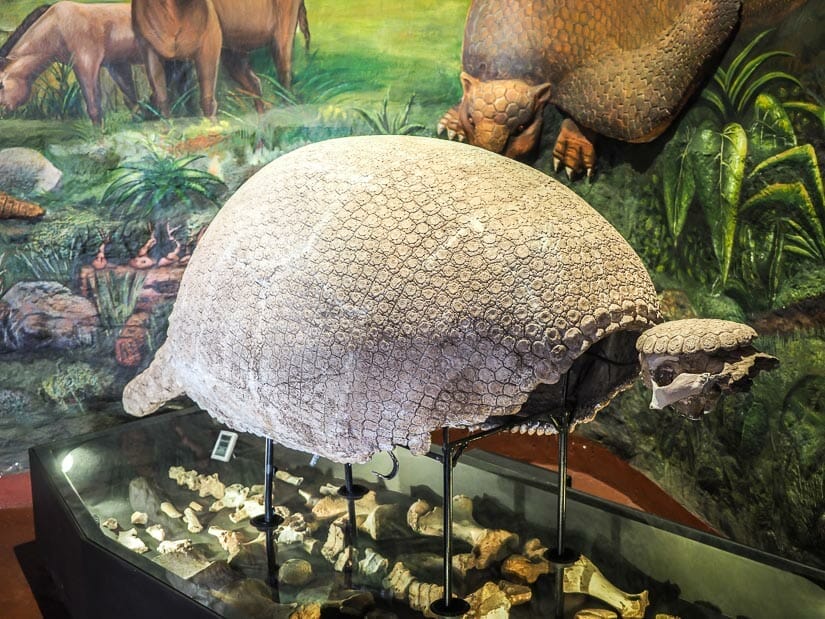
- Museo de Arte Popular: In the basement of the place you buy the Boleto Turistico, it’s not even worth five minutes of your time.
- Museum of Contemporary Art: If the last one was bad, this one is even worse. Don’t bother.
- Regional Historical Museum: This is the best museum included on the pass. It covers ancient wildlife in the Cusco region, a few Inca artifacts, and a few paintings.
- Centro Qosqo de Arte Nativo: This is an indignenous music and dance performance venue. The one-hour performance takes place at 7 PM daily. It is across the street from Coricancha. It is worth catching a performance if you are interested in local culture and customs.
- Inca Pachacutec Monument: This is a cool 30-meter monument consisting of Pachacutec (the builder of Machu Picchu) standing on a tower in a traffic circle. You can climb up the tower to the base of the staue. The only issue is that it’s a 20-minute (downhill) walk from Plaza de Armas. Consider taking a taxi back.
- Qoricancha Site Museum: This is a small underground museum across Sacred Garden from Coricancha and Church of Santo Domingo. It is currently closed, with no word of if and when it will reopen.

Religious Circuit Ticket Museums
The Religious Circuit Ticket is more of an entrance deal on three attractions than a proper pass. You can still enter those three places without getting the deal. The ticket is 50 soles, so you only save 10 soles if you visit all three.
See my guide to the Boleto Religioso for all the details.
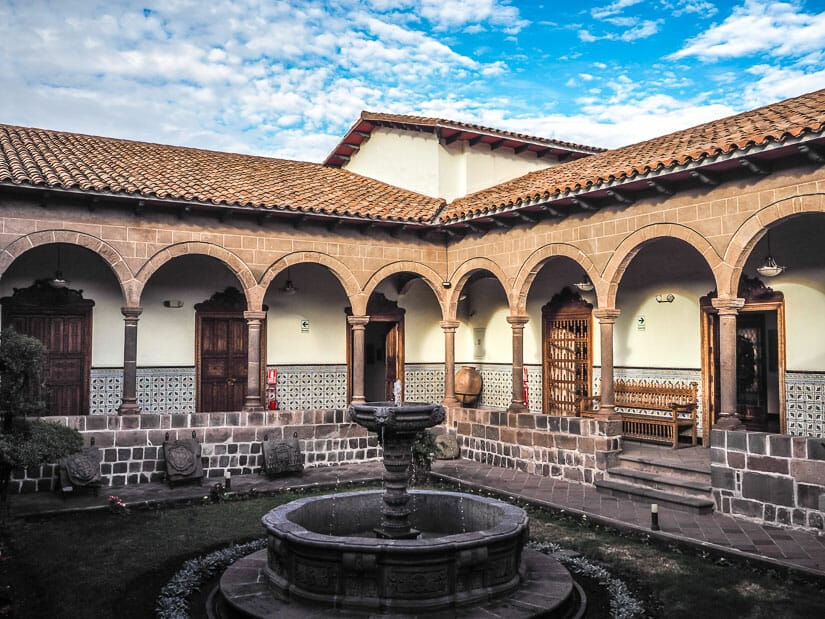
- Cusco Cathedral: I’ve already covered this in the “Church Museums” section above. Without the Religious Circuit Ticket, it costs 40 soles to enter.
- Museum of Religious Art: The Museo de Arte Religioso houses one of the best collections of Cusco School paintings in the city. It is housed in the former Archboshop’s palace. There is also a small chapel inside with an altar covered in gold. The outer walls of the palace have the famous 12, 13, and 14-angled stones (you can see them without entering). Individual entrance is 10 soles and no photo are allowed except in the courtyard.
- San Cristobal Church: This isn’t a museum but a church up on the hill overlooking Cusco. The church itself is uninteresting, but the ticket gives you access to the Bell Tower, which has an amazing view looking down on the city. Individual entrance is 10 soles.
Other Cusco Museums
There are a few more small museums you might want to visit in Cusco.
Museo Maximo Laura

This small museum/gallery showcases the work of Peruvia weaver Maximo Laura. The Peruvian government has designated Laura a National Treasure, according to standards laid out by UNESCO.
Laura’s weavings are pieces of art meant to be hung on the wall. They are bursting with color and I was truly impressed by them.
There’s no entrance fee but you can leave a donation in the box. I didn’t ask or see any signs about it, but photography seems to be allowed.
ChocoMuseo

ChocoMuseo is a chain of chocolate shops, with two locations in Cusco, as well as ones in Lima, Ollantaytambo (the one in Pisac is now closed), and outside of Peru.
This is more of a chocolate shop than museum. They sell all kinds of bars, liquors, teas, soaps, candles, and so on made with chocolate. They also offer bean-to-bar classes, which you can book online here.
The location near Plaza de Armas is the best one I visited in Peru because you can actually peer into the room where the chocolates are being made. There are also a few chocolate statues on display, such as Machu Picchu made out of chocolate.
Entrance is free and they usually hand out samples.
Coca Museum
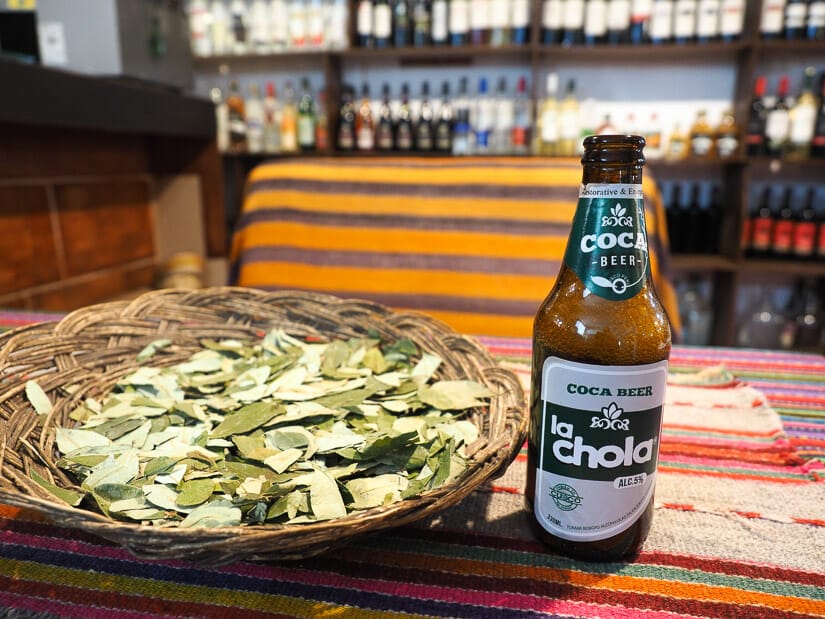
The Coca Museum on San Blas Plaza is a very small and low budget museum covering the history, growing, processing techniques, and ceremonial uses of coca.
The signage may be printed off a home printer, but you can still learn a thing or two. I enjoyed the collection of dozens of old products containing coca – Coca Cola is just the tip of the iceberg.
You can also buy various coca products, but beware that they are likely illegal to bring into your country. I also tried a coca beer there, but it wasn’t good. There are free coca leaves for chewing, too.
Entrance to the museum is 10 soles.
Museums around Cusco
There are two more museums in the greater Cusco area worth mentioning.
Museo Inkariy
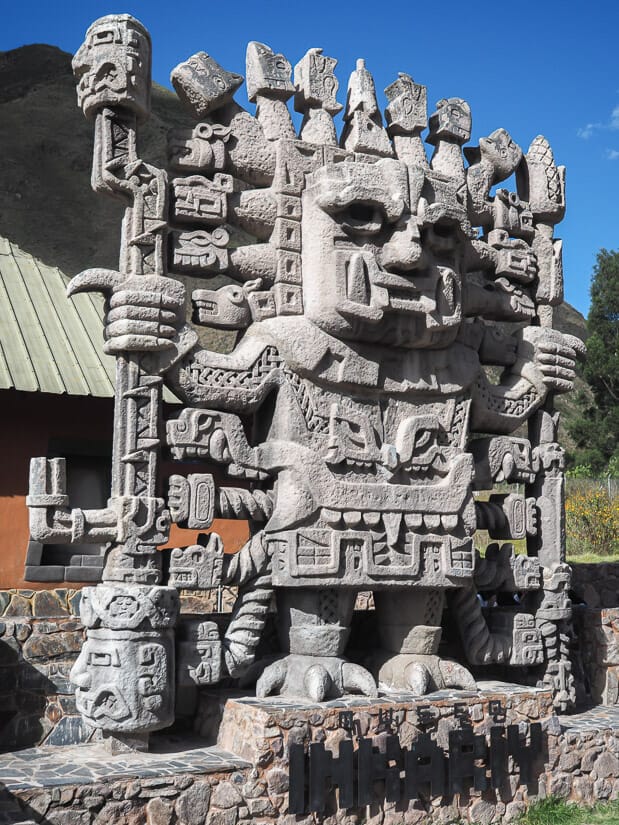
Museo Inkariy is a museum covering the Incas and seven other civilizations before them. It is located in the Sacred Valley, between the towns of Huycho and Calca.
This was actually my favorite museum experience in the entire Cusco region, including all the museums in Cusco city.

Why did I like it so much? Well, it all started with the massive, attention-drawing native-style statue out front. Inside, there are two rooms devoted to each of the eight civilizations. The first ones have very clear and detailed English information about that civilization, plus some interesting artifacts.
The second rooms brought each civilization to life, with sounds or chanting, life-sized models, and beautifully executed scenes from the past. I saw priests doing ceremonies on the Nazca lines, tribal leaders sitting in wall niches just like the ones I saw at Machu Picchu and on the Inca Trail, rulers being carried in palanquins by their devotees, and so on.
One room in particular brought me right back to one of my favorite childhood movies, Indiana Jones and the Temple of Doom.
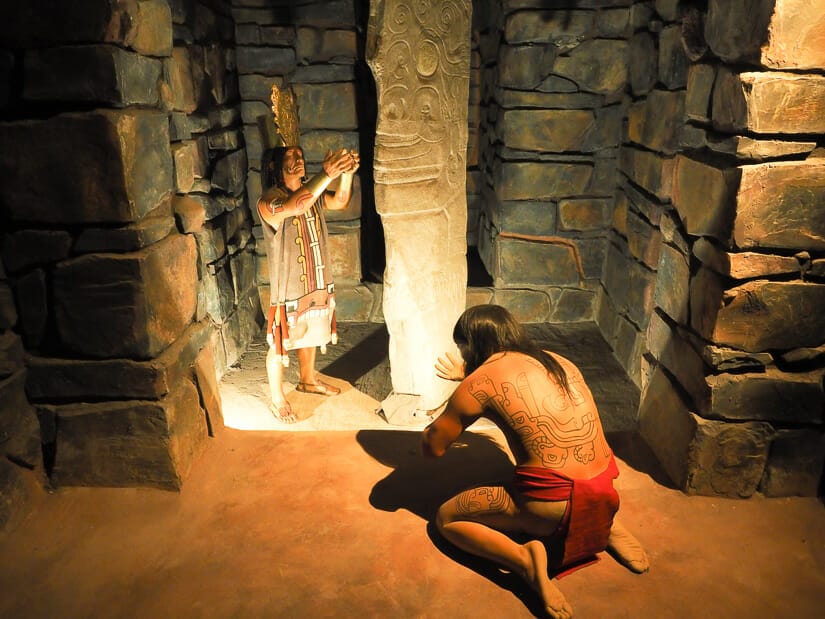
Yes, most of the artifacts here are replicas. But this museum won me over with its dramatic exhibits and clear, chronological information.
I felt I really learned about all the history and cultural traits that came before but contributed to the Inca civilization. I usually get bored in museums, but in this one, I was into it from start to end.
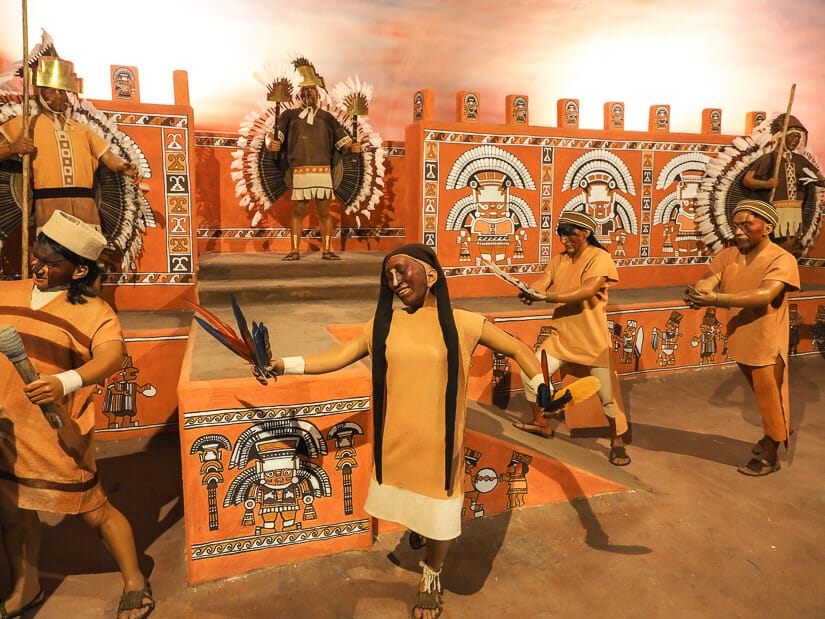
It’s too bad the museum is inconveniently located. I reached it on a half-day trip by colectivo from Pisac, but you could also stop there when traveling between Pisac and Ollantaytambo. It is also included on this Sacred Valley tour.
Entrance to the museum is 25 soles and photography is allowed.
Manuel Chávez Ballón Site Museum
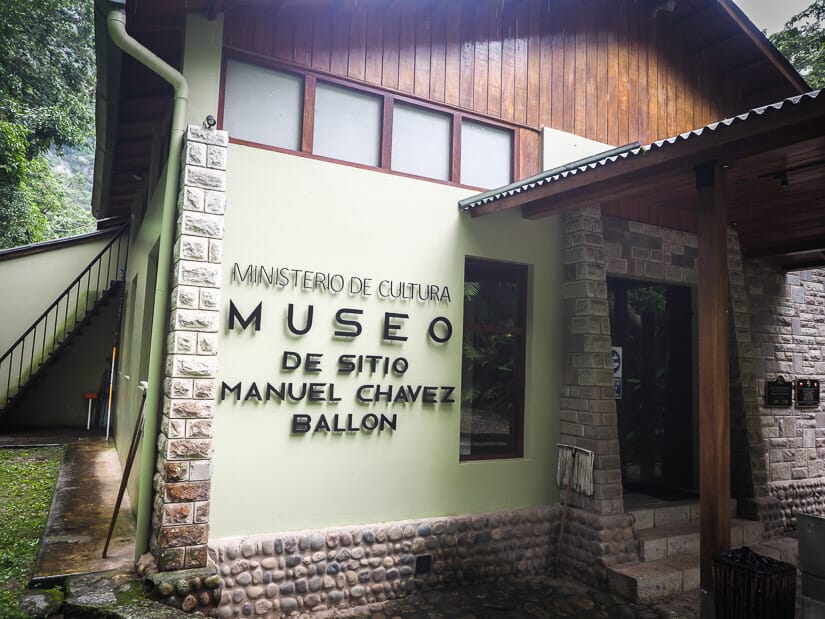
The final Cusco region museum I want to cover in this article is the Manuel Chávez Ballón Site Museum (Museo de Sitio Manuel Chávez Ballón), also known as Machu Picchu Museum.
This Machu Picchu-focused museum is located between Aguas Calientes (the tourist village below Machu Picchu) and Machu Picchu itself. It’s right at the bottom of the mountain, where buses begin the switchback drive up to the ruins, called the Hiram Bingham Highway.
The museum is named after the father of modern Cusco archaeology, Manuel Chávez Ballón. It includes a spattering of Machu Picchu artifacts (nothing too impressive or surprising).
What I found most interesting were the National Geographic magazine that made Machu Picchu famous (and in turn made the magazine famous) and some of the first maps drawn of the area.
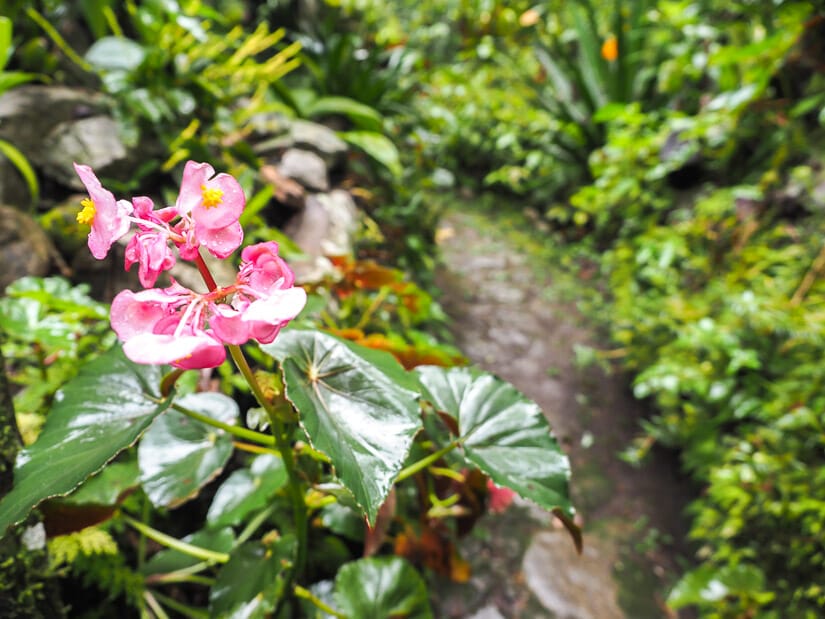
Outside, there is a five-minute walking trail through a lovely botanical garden with an original Inca wall running alongside it.
Entrance to the museum is 22 soles, or free if you have a Machu Picchu ticket for that day. Photography is not allowed inside.
You can walk there in about 25 minutes from Aguas Calientes, passing the fascinating Butterfly Sanctuary (Mariposario of Machu Picchu) on the way. It’s just past the trailhead for the steep hike up to Machu Picchu.
When crossing the bridge just before the museum, the guards might ask to see a Machu Picchu ticket. You can just inform them you’re going to the museum, not Machu Picchu.
Well, folks, that brings us to the end of this Cusco museums guide. What were your favorite (or least favorite) museums in Cusco? Let me know in the comments below!

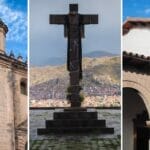
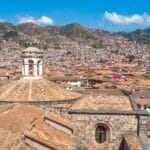

An excellent summary of the museums, thanks for taking the time to do this!